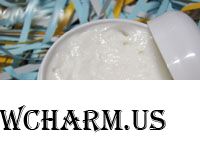What antioxidants need to be looked for in cosmetics?

Free radicals are very unstable molecules created by oxidation process. It occurs when the oxygen molecule which is stable as it has even number of electrons in the course of chemical reaction loses one of these electrons. Such new molecules are called free radicals.
As free radicals lack one electron, they have to find it quickly. To make it, the free radical attacks other molecule to get him from it. It leads to damage of DNA, cages and proteins. Besides, chain reaction as again formed free radical needs also to find a missing electron begins, "having attacked" other molecule. And so on. This chain can not only accelerate aging process, but also cause diseases, such as cancer or heart troubles.
Why this process of oxidation begins? Well, it can be caused as external factors, such as ultra-violet radiation, environmental pollution, smoking and alcohol, and internal processes in an organism, such as metabolic disorder or inflammations.
What work of antioxidants consists in
- Antioxidants are a protection of an organism against the damages caused by oxidation process which makes free radicals. Popular antioxidants are vitamins C and E, selenium, coenzyme Q10, flavonoids and beta carotene.
- Antioxidants can be classified on two groups: those which break chains of free radicals (such as vitamins C and E) and those which are neutralized by free radicals, slowing down or even preventing chain reactions.
- We are exposed to the attacks of free radicals constantly and for many years, it can do a lot of harm to our organism. Unfortunately, our organism itself does not make enough antioxidants to neutralize all these damages.
 - But there are several things which we can make to prevent, at least, partially, education of free radicals. Measures are quite simple and known to much: to daily use sunblock cream, not to smoke, not to consume too much alcohol and to use cosmetic products which contain antioxidants.
- But there are several things which we can make to prevent, at least, partially, education of free radicals. Measures are quite simple and known to much: to daily use sunblock cream, not to smoke, not to consume too much alcohol and to use cosmetic products which contain antioxidants. - Antioxidants can be powerful allies in fight against presenilation, but not all from them are equally effective. First of all, they have to be present at a cosmetic product in high concentrations therefore if you noticed them at the end of the list of ingredients, then to sense from these antioxidants will not be.
- Packing is also important. Some antioxidants are stabler, others – less, but all of them decay under the influence of light and air. Thus, it makes sense to choose cosmetic products with antioxidants which are packed into opaque tubes or small bottles, but not into glass.
- Also you remember that, except for vitamin A, antioxidants can prevent appearance of new wrinkles, but nothing can be made for those wrinkles which you already have.
- It is important that the anti-aging effect will take months if not years before you see some results.
 - Antioxidants are more effective at intake, through food. But be careful as in large numbers antioxidants can be toxic.
- Antioxidants are more effective at intake, through food. But be careful as in large numbers antioxidants can be toxic. - Anyway, is the healthy food rich with antioxidants, more favourably, than to receive these substances through additives. Vitamin E can be found in green sheet vegetables, olives, almonds, peanut and walnuts, in avocado and a liver. Vitamin C can be found in a citrus, sheet green vegetables, pepper, potatoes, tomatoes and strawberry. Beta carotene is in mango, a papaya, sweet pepper, spinach, sweet potatoes and apricots. Selenium can be found in seafood, brown rice, chicken, pork and beef.
The most popular antioxidants as a part of cosmetics
And now, when most of us does not doubt need of antioxidants, it appears, to you it will be interesting to study the list of the most widespread of them which meet in cosmetics. And this list can become the excellent reason to check the cosmetics and also to apply it upon purchase new.
- Alpha lipoic acid (ALA, Alpha Lipoic Acid)
Alpha lipoic acid is enzyme, soluble both in water, and in oil which easily gets into skin. It has a number of powerful antioxidant properties and also ability to regeneration of C and E vitamins that allows to increase their efficiency. However, antioxidant properties of alpha lipoic acid are evidence-based at intake, and yet there are no proofs that ALA will provide the same properties at external application. Besides, it is SCARLET are more vulnerable to degradation under the influence of sunlight, than the majority of antioxidants, and its high concentrations (5% and more) can cause negative reaction of skin (burnings and prickings).
 - Coenzyme Q10
- Coenzyme Q10Coenzyme Q10 is fat-soluble connection which is already present at all cells of the person, but his stocks disappear under the influence of the sun. Coenzyme Q10 helps to struggle with free radicals, stimulates production of collagen and reduces injuries of skin from ultraviolet.
- Glutathione
Glutathione is the protein received from glycine, glutamic acid and cysteine it, as well as coenzyme, is produced in tissues of animals and the person, but his stocks are exhausted because of stay in the sun. Therefore its existence in cosmetics is justified. He helps to struggle with free radicals.
- Extract of grape seed
Often found component in anti-aging cosmetics. Extract of grape seed contains antotsiana, flavonoids and polyphenols, all this connections with strong antioxidant properties. They help to struggle with free radicals, improve synthesis of collagen and reduce the destroying influence of sunshine (but it is not sunblock cream and such functions on extract of grape seed you should not assign).
- Green tea
Green tea is rich with polyphenols (powerful antioxidants). They help to reduce injuries of skin from free radicals at the level of DNA and also help to protect skin from harmful sunshine and their consequences (including cancer diseases). One more component of tea is epigallokatekhin-3-галлат, it was proved that it considerably reduces collagen destruction.
- Vitamin A
Vitamin A and its derivative (retinoida) are the gold standard of anti-aging components. Some of forms, used in cosmetic products, it: Retinolum, retinit palmitat, retinoyevy acid (tretinoin) and retinilaldegid. Vitamin A – the only ingredient which proved the efficiency in reduction of wrinkles (but it takes not less than 3 months to see the first results). Besides, he improves production of collagen and creates healthy cells of skin. However retinoida can cause reddening, peeling and prickings in some women therefore it is recommended to begin with products which contain small concentration of these ingredients and to use them every day until your skin gets used to them.
- Vitamin C
Vitamin C (L-ascorbic acid) and its derivatives (for example, ascorbic palmitat, Askorbil magnesium phosphate, sodium phosphate also offended glucoside, etc.) have strong antioxidant properties. Vitamin C increases production of collagen, reduces inflammation, strengthens a natural barrier of skin and offers some protection against the sun (besides, it cannot replace sunblock cream). However this vitamin very unstable and quickly is oxidized (i.e. degrades) under the influence of light and air.
- Vitamin E
Vitamin E is also popular in cosmetics, but is most often used in a complex with vitamin A. Vitamin A promotes decrease in education of free radicals and if to apply it to an exit to the sun, it helps to prevent and reduce the reddening, burns and damage of DNA caused by UV rays. But it does not mean that you can not use sunblock cream! Use of vitamin E in combination with vitamin A promotes increase in efficiency of sun-protection active ingredients.
Copy the code and insert into a window of creation of record on LiveInternet, previously having included the Source mode there.
HTML-code: 
|
|
| The BB code for forums: |
How will it look?
wowcharm.us → What antioxidants need to be looked for in cosmetics?

|
What is free radicals Free radicals are very unstable molecules created by oxidation process. It occurs when the oxygen molecule which is stable as it has even number of electrons in the course of chemical reaction loses one of these electrons. Such new molecules are called free radicals... Read more: |
| "Jingle medicinal or liliyelistny | | | Food of anti-age" |
|
Other discussed materials:
The personal cosmetologist - sauerkraut
The taxi with adventures
Charming Natasha Toha 336, we wish happy birthday!
I have gifts)) Brag
|









